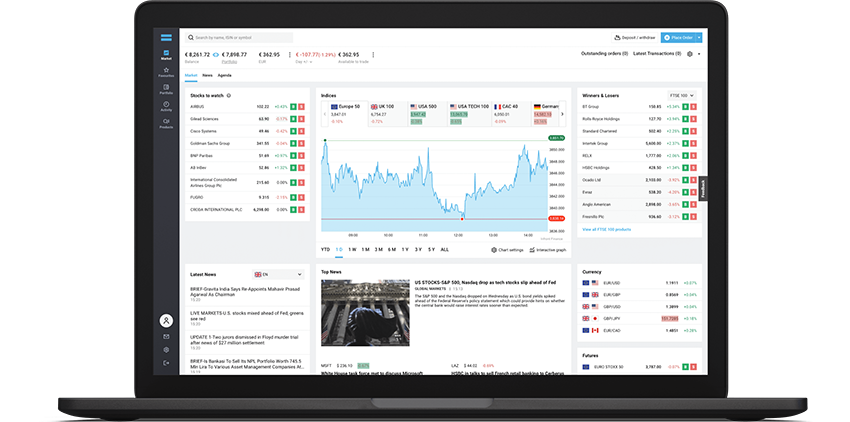Tickmill is a reputed forex and CFD broker that has been around since 2014. The company is regulated by several global financial authorities, including the UK’s top-level Financial Conduct Authority (FCA). This makes it a safe broker. To get the summarized information, click on the Tickmill review here.
Table of Contents
What Are Different Types Of Fees Charged By Brokers
When you trade, you pay fees. These are commissions, spreads, financing rates, and conversion fees.
Fees that have nothing to do with trading, like withdrawal fees or fees for not doing anything, are called “non-trading fees.”
We decided whether Tickmill’s fees were low, average, or high based on how they compared to all the other brokers we looked at.
Tickmill fees are most important for each asset class. For example, spreads, commissions, and financing rates are the most critical fees in forex and stock index trading.
To get started, let’s talk about some terms used to discuss broker fees. You should be aware of trading fees and other fees.
Let’s start with the trading fees to get a clear picture of what Tickmill is all about.
Tickmill’s Fees For Trading
The costs of trading on Tickmill are low. There are different ways to pay for each type of account. We tried out the Pro account, which has tight spreads but costs a fee.
When a live trading account is opened, you can get a Tickmill Bonus of a USD 30/R450 ZAR sign-up bonus called a “Welcome Bonus.” To open a Tickmill account, you should put down at least $100.
We know it’s hard to compare forex brokers’ trading fees. So how did we make their fees clear and easy to reach? We compare brokers by adding up all the costs of a typical trade for specific products
| Tickmill forex benchmark fees of a $20,000 30:1 long position held for one week | |||
| Tickmill | AxiTrader | FXCM | |
| EURUSD benchmark fee | $6.7 | $4.9 | $8.2 |
| GBPUSD benchmark fee | $4.5 | $3.4 | $2.8 |
| AUDUSD benchmark fee | $4.3 | $3.4 | $5.3 |
| EURCHF benchmark fee | $5.9 | $1.5 | $4.1 |
| EURGBP benchmark fee | $7.6 | $4.7 | $11.6 |
We chose well-known instruments from each asset class that forex brokers usually offer:
In a typical trade, you buy a product with leverage, hold it for a week, and then sell it. We chose a $20,000 position size for forex and a $2,000 for stock index and stock.
All brokers pay these fees, which cover spreads, commissions, and financing costs.
Most of the reason why forex fees are low is that Tickmill charges a low commission. The price is two base currency units per lot and trade. For example, it is €2 per lot per trade for EURUSD, £2 per lot per trade for GBPUSD, etc.
CFD Costs
Tickmill CFD fees are:

| Tickmill CFD fees for a $2,000 long position held for one week | |||
| Tickmill | AxiTrader | FXCM | |
| S&P 500 index CFD fee | $1.6 | $1.6 | $1.4 |
| Europe 50 index CFD fee | $1.6 | $1.7 | $2.0 |
Fees For Not Trading
Tickmill has low fees for things other than trading. There are no fees to put money in or take money out. There is also no fee for inactivity, but the broker may close accounts that haven’t been used in more than a year and have a balance of less than €10 (or the eq. Types of accounts
| Tickmill | AxiTrader | FXCM | |
| Account fee | No | No | No |
| Inactivity fee | No | No | Yes |
| Deposit fee | $0 | $0 | $0 |
| Withdrawal fee | $0 | $0 | $0 |
Account Types Offered By Tickmill
There are different prices, minimum deposits, and minimum account balances for each type of account on Tickmill.
You can also open accounts for businesses and accounts that don’t use swaps. The main difference between Islamic and other accounts is that there are no daily exchange rates. Instead, if you hold some exotic currencies for more than three nights, you have to pay an administration fee.
Retail customers of Tickmill Ltd Seychelles can use up to 1:500 leverage, but retail customers of Tickmill UK Ltd and Tickmill Europe Ltd can only use up to 1:30 force. If you are trading as a single person, you can deal with up to 1:500 (Tickmill UK Ltd) or 1:300 (FXCM) leverage (Tickmill Europe Ltd).
Due to leverage, CFDs are complicated instruments with a high risk of losing money quickly. When small investors trade CFDs with this provider, 70% of their accounts lose money. It will suggest that you should think about whether you understand how CFDs work and whether you can risk losing much money.



